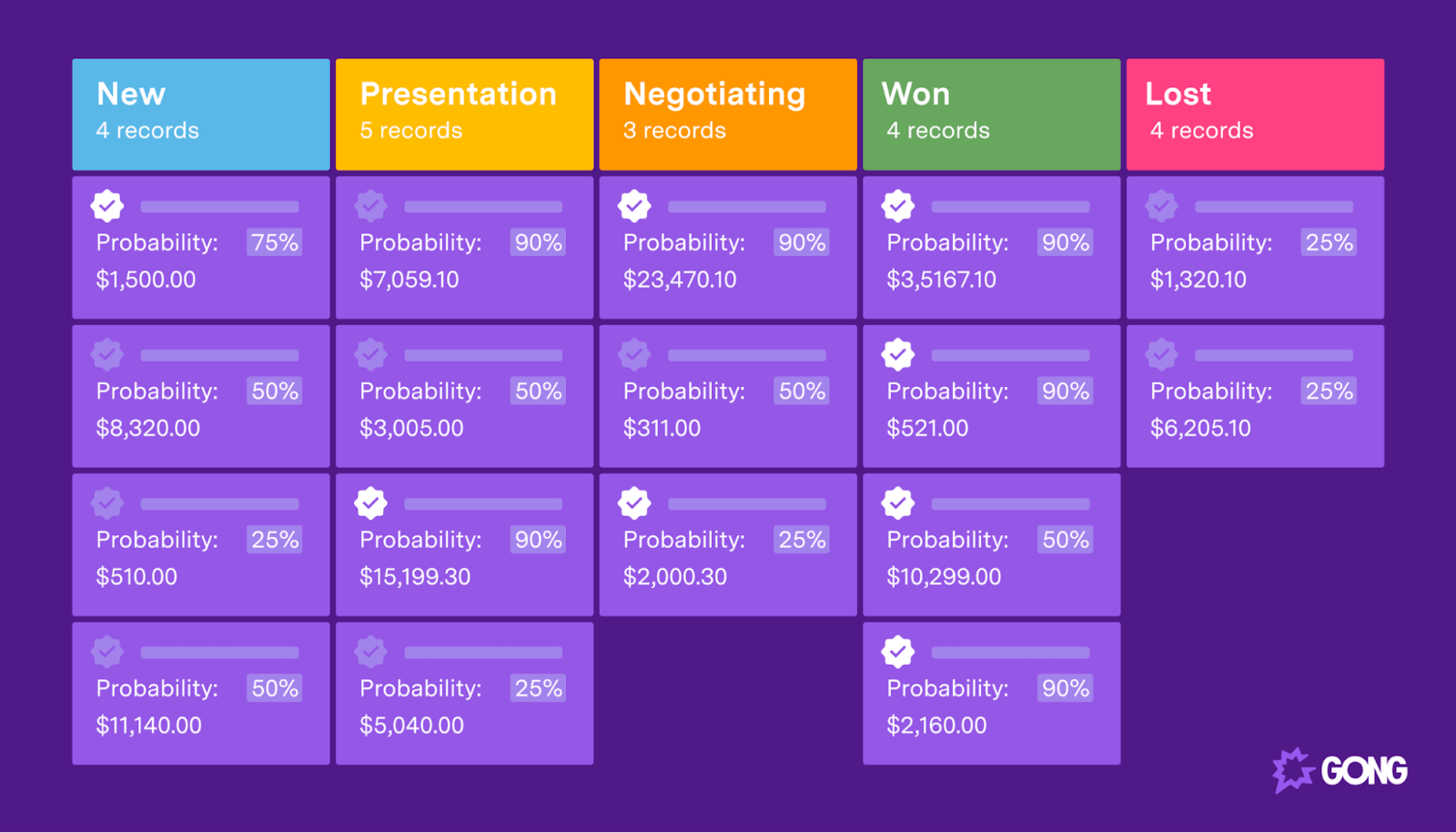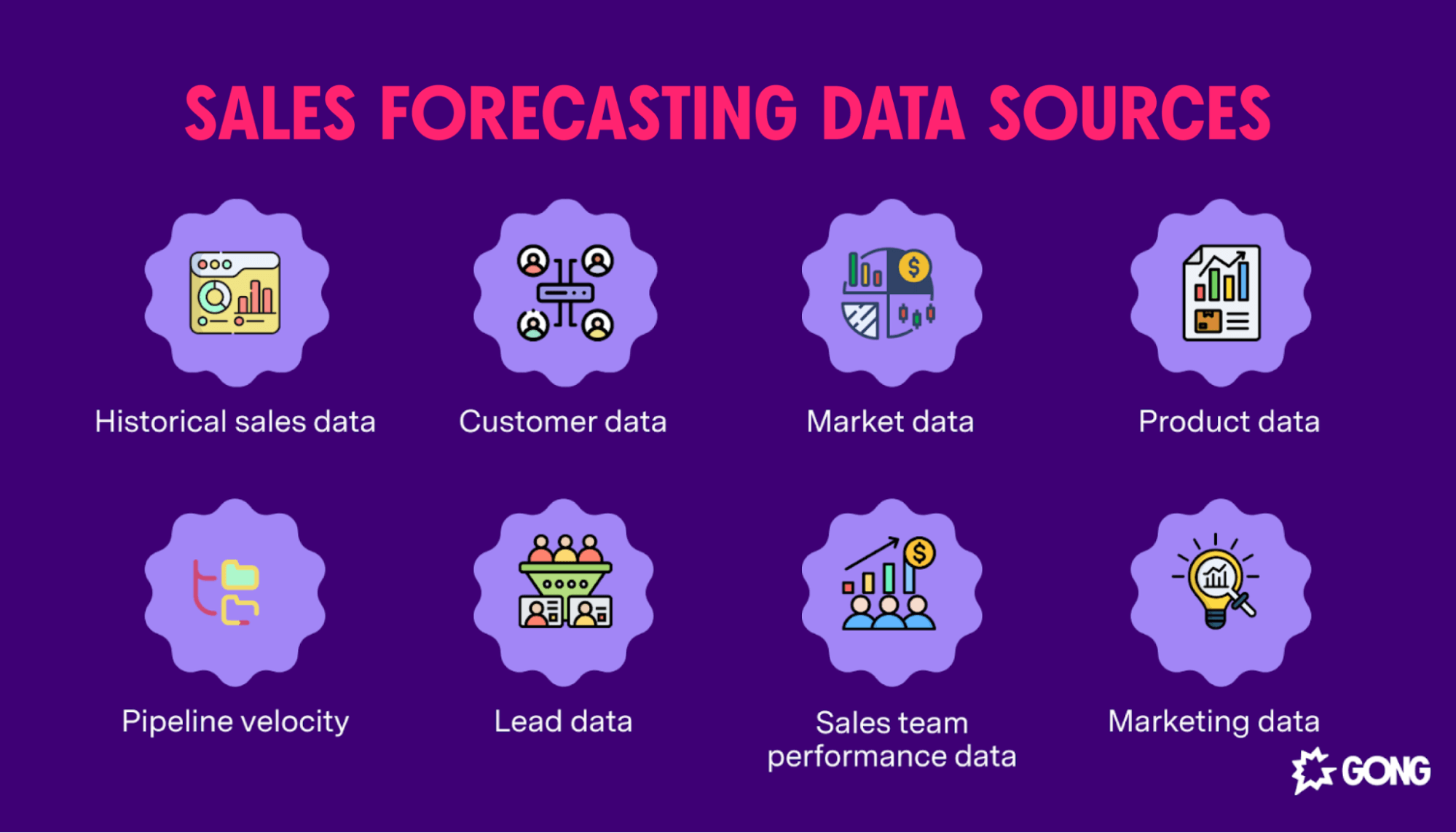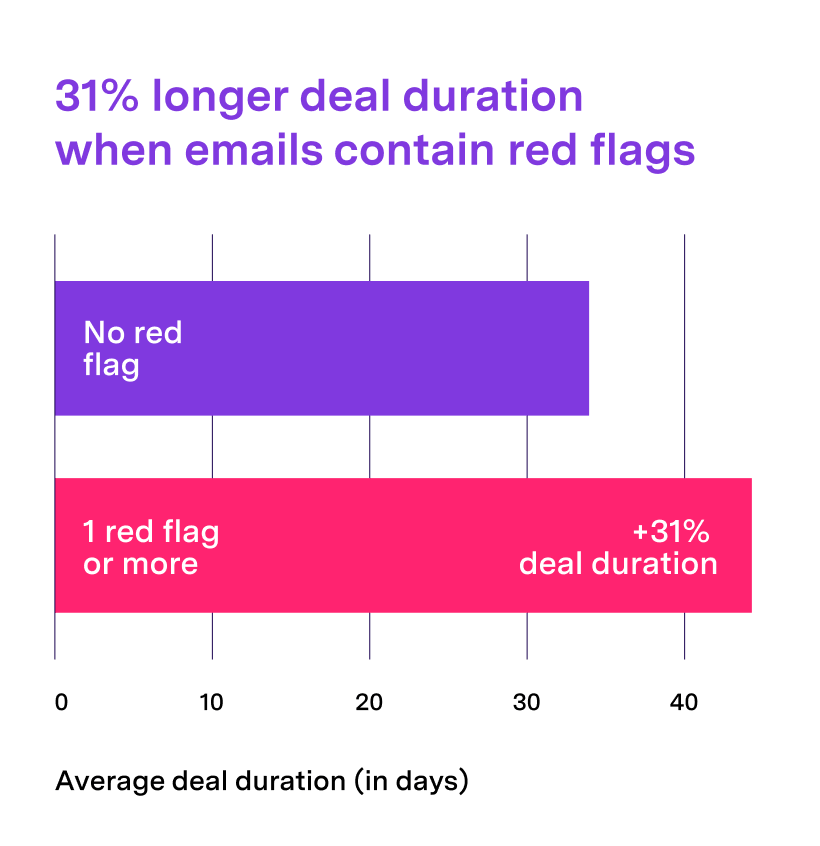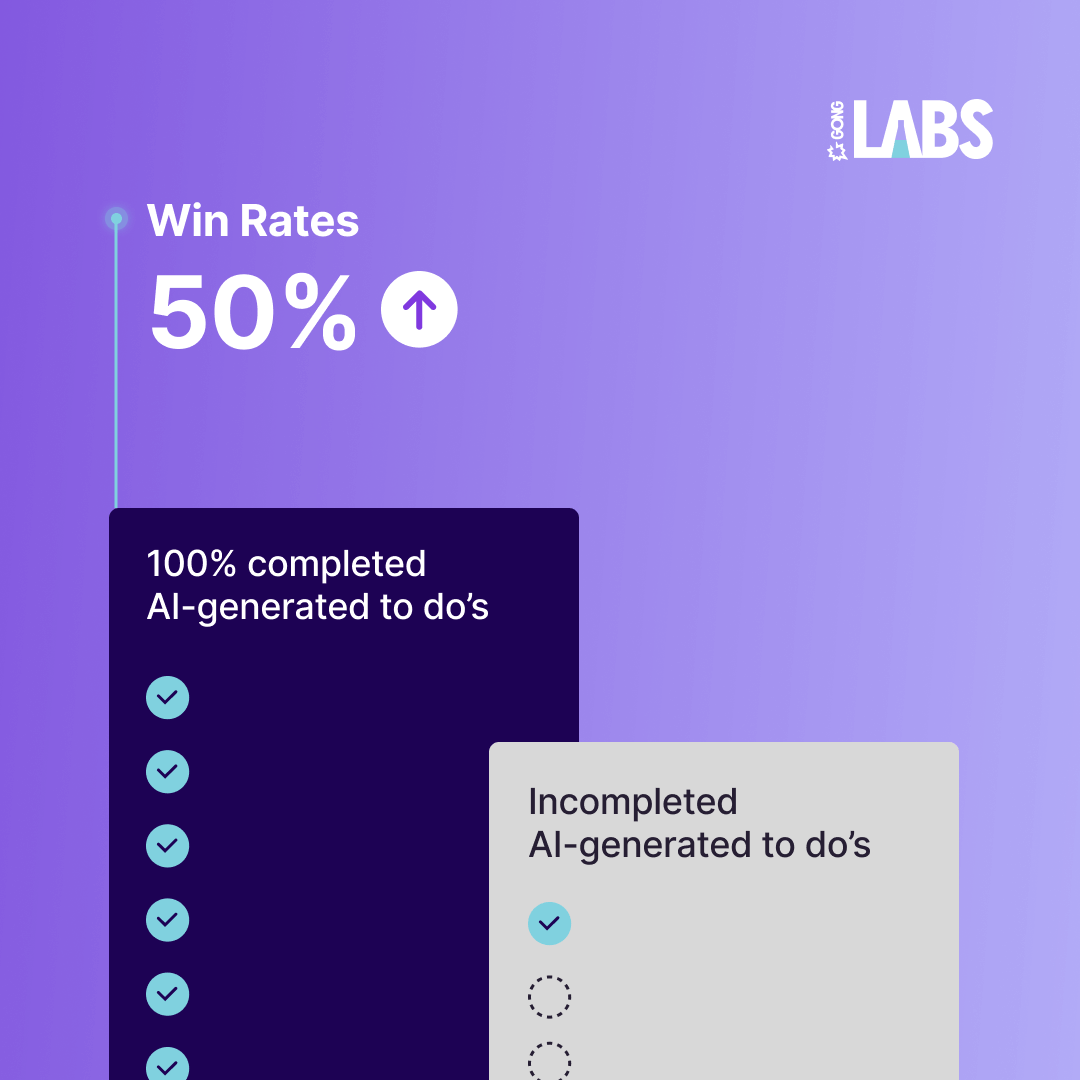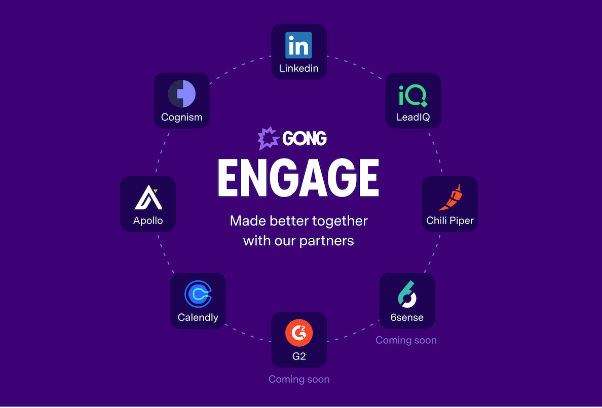Pipeline data: What to collect and how to use it
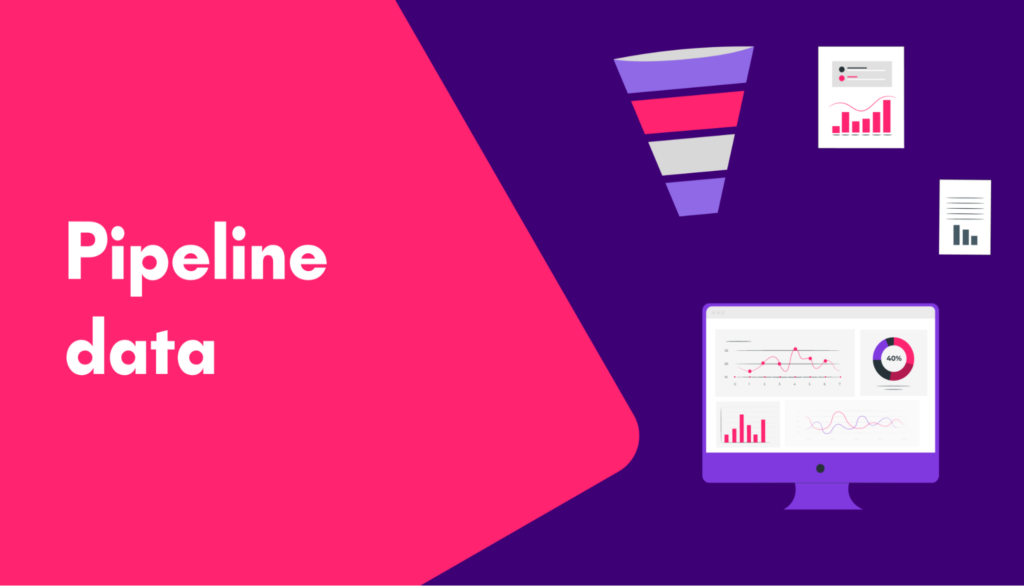
Are you making the most of the data locked in your pipeline?
By tracking more than total opportunities, win rates, and pipeline coverage, you can improve sales forecasts, uncover hidden risks, close more deals, and enhance your AI readiness.
This article explores a better way to track pipeline data and how you can use it to improve multiple sales processes. It also provides you with three examples of how real companies use revenue AI to leverage their pipeline data and drive growth.
What is sales pipeline data?
The sales pipeline is a metaphor for where opportunities are in your sales process. Opportunities must pass through each stage of the pipeline to open pipeline to won business.
Pipeline data is all the information you hold about those deals and prospects at each stage in the process. It includes this key information (and much more):
- Deal size (average deal value)
- Conversion rates (win rate, stage-to-stage conversion)
- Pipeline velocity (sales cycle length)
This data can be cut by stage, industry, and rep, which Sales and RevOps leaders can use to improve their team’s sales processes and maximize revenue.
For example, sales leaders can run a sales pipeline report to find at-risk deals, calculate the total value of their pipeline, and identify potential problems in their existing sales process.
Sales leaders can use their pipeline data in a revenue AI platform like Gong, which calculates the probability each deal will close:
You can also use pipeline data to track and improve individual and team performance. For instance, an AI-backed analysis may show that dozens of deals get stuck or lost during the demo stage of your sales process.
Coaching about how to run demos and close interested prospects may help unclog your pipeline and get deals flowing again.
Finally, RevOps leaders can use pipeline data to look to the future and forecast how much revenue their team will likely generate in the next month, quarter, and year. High-quality pipeline data is vital for accurate forecasts, which is why you need a way to track your most important pipeline metrics and KPIs.
We’ll cover how to automate pipeline data collection in a moment, but first, let’s examine the metrics you need to track.
Which pipeline data should you track?
Dozens of pipeline-specific metrics and KPIs can help you effectively analyze your pipeline’s heath, track rep performance, and forecast future revenue.
Some of the most important metrics include:
- Total opportunities: This measures the overall number of prospects in your pipeline.
- Average deal size: This is the average size of deals closed during a given period. It’s calculated by dividing the total value of closed deals by the total number of closed deals.
- Sum of opportunity amount: Also known as sales pipeline value, this is the total value of all open opportunities in a given period.
- Opportunity amount by stage: This is the total value of deals at each pipeline stage.
- Opportunity amount per rep: This is the total value of open deals owned by individual reps. This is often used to calculate pipeline coverage per rep, which evaluates a rep’s open pipeline against their remaining target in a period.
- Meetings scheduled for this week or next: This is the number of meetings reps have scheduled in the coming weeks, a great leading indicator for potential pipeline.
- Win rate: The percentage of deals you’ve won in a given period. This is calculated by dividing won deals by total opportunities won or lost in the given period.
- Stage conversion rate: The percentage of deals that progress from one stage to the next. As mentioned above, this is a great way to identify coaching opportunities if you see a big dropoff at a particular stage.
- Sales cycle length: Also called pipeline velocity, this is the average time it takes to close an opportunity from the point it enters your pipeline
Given the massive amount of data and metrics you can track, a revenue AI platform is a must. It can even streamline the entire process by automating repetitive tasks like data collection and analysis.
How to track more pipeline data with Gong
Tracking multiple pipeline metrics in one place can be difficult for sales organizations of any size. Even if you have a state-of-the-art CRM, it’s unlikely to contain all the information you need, let alone in an organized way that’s actually useful.
The problem is widespread, according to Rahim Fazal, Co-Founder of SV Academy:
Pretty much everyone that we talked to said that pipeline data was a great constraint for them and they could quantify it in terms of the value of every dollar in the pipeline to your uplift in valuation and multiples.
Rahim Fazal, Co-Founder of SV Academy
Gong Reveal Podcast: From rap artist to Silicon Valley CEO
Gong solves this by automatically collecting your most important metrics and KPIs.
It also helps you move beyond CRM data by collecting primary customer interaction data from every conversation your reps have with prospects by email, phone, or web. In addition to all the pipeline metrics already mentioned, Gong automatically collects real-time data across hundreds of touch points. Custom-built integrations with leading sales tools like Salesforce, Hubspot, RingCentral, and Zoom further increase your available data.
How to use better pipeline data to improve your sales processes
Improving the quantity and quality of your pipeline dataset is just the beginning.
Machine learning and AI-driven technologies can automate data collection to improve your overall business efficiency and drive revenue growth. Here’s how:
Forecast future revenue
There are plenty of sales and revenue forecasting data sources that predict your future performance:
Pipeline data is one of the most important. It offers a window into the future, allowing you to predict how much revenue you’ll generate in the next month, quarter, and year.
The accuracy of revenue forecasts hinges on consistent data quality. The better your data, the more reliable and accurate your forecasts.
That’s where a revenue AI platform like Gong comes in. Gong takes traditional pipeline data sources even further by leveraging more than 300 unique signals to predict deal outcomes with 20 percent more precision than forecasts that use CRM data alone.
Its forecasts aren’t static, either. Gong’s real-time analytics and dashboards help you stay on top of your forecasts, pipeline, and strategic initiatives.
Improve team performance
High-quality pipeline data can lift the lid on your team’s performance. You can assess sales rep productivity, uncover strengths and weaknesses, and assess how effectively your reps implement proven tactics and techniques.
For example, you can analyze your pipeline to see at which stage your team loses the most deals. As a result, you can take a more targeted approach to sales training, focusing on the specific skills reps need to move prospects through each sales funnel stage.
Alternatively, you can adjust your sales strategy or create more collateral to overcome the specific challenges your team faces. A new methodology may also increase the quality of prospects or arm your team with more tools they can use to nurture leads.
You can even use pipeline data to measure the impact of sales training and other optimizations.
Uncover hidden risks
When you have access to a wealth of pipeline data, you no longer need to rely on reps’ opinions or assumptions to assess the health of your pipeline.
A 360-degree view is right in front of you. Gong gives a clear view of what’s happening at every point in every deal. You’ll quickly see which deals are healthy and which aren’t, allowing you to step in and address red flags as soon as they appear.
This is important because deals with red flags take 31 percent longer to close, on average.
By combining pipeline metrics with conversational intelligence, Gong automatically flags at-risk deals, so your reps always know what requires their immediate attention.
Close more deals
Sales reps have limited time and resources to nurture prospects and close deals. Therefore, it’s important that they focus their energy on the opportunities are most likely to close.
Those deals are easier to spot when everyone has access to high-quality pipeline data and a platform like Gong that can recognize and track the characteristics that make deals more likely to convert.
Identifying those deals early and giving them the attention they deserve can significantly increase conversion rates. Gong research found that sellers who prioritize timely follow-ups and complete open action items have higher win rates and cut deal duration by 11 percent on average.
Implement AI
Artificial intelligence is transforming the sales industry, but good results are dependent on high-quality pipeline and customer interaction data. The more relevant data points you collect, the better your AI results will be.
With Gong, you don’t have to worry about AI insights based on poor-quality CRM data. Instead, you can focus on outcomes like helping reps work smarter, by using AI prompts to identify high-impact opportunities, choose the best next step, and save at-risk deals.
AI-generated notifications for email follow-ups, prospect nudges, and meeting confirmations can also shorten deal cycles and increase win rates. In fact, average win rates increased by 50 percent in deals where reps completed all their AI-recommended to-dos compared with reps who didn’t complete their action items.
How real companies use Gong to analyze pipeline data and drive more revenue
Below are examples of three brands using Gong’s Revenue AI Platform to unlock high-quality pipeline data and drive measurable improvements in sales and revenue. Which of their lessons learned could you apply to your company?
Frontify
Frontify is a brand management software company that helps companies organize all their assets in one place.
Before switching to Gong, Frontify managed its pipeline using a range of business intelligence tools and spreadsheets. The result was a messy workflow that was prone to errors.
Gong’s Revenue AI Platform changed this, consolidating data from every customer interaction into a single location. Today, the team can act quickly to save and convert deals, which has had an amazing impact. For example, real-time insights into pipeline health have led to a 20 percent increase in the company’s forecast accuracy. Conversion rates are up by 30 percent too.
“Gong’s AI has changed our approach to sales engagement,” says Naya Tsoukala, Head of Revenue Operations. “We now have actionable insights that we can leverage. We don’t need to add CRM notes — you can just ask AI to give you a summary. Everything is at our fingertips.”
Canva
Canva is a visual communication platform that empowers consumers and brands to create professional, high-quality graphics and images.
With a lack of deal and workflow insights inhibiting growth, the brand’s EMEA sales team turned to Gong’s platform. Jorge Bestard, Canva’s Head of Sales and Success EMEA, wanted his team to surface insights from customer interactions and use those insights to improve forecasts and close more deals.
With Gong Forecast, Jorge and his team are automatically surfacing the factors that close deals.
That’s part of how Gong’s increased forecast predictability lets the Canva team make smarter, data-backed decisions about where to allocate their resources and when to scale teams.
Verse.ai
Verse.ai is an AI-powered SMS platform that empowers customers to convert leads using conversational AI.
Before turning to Gong, Verse.ai’s sales team struggled with pipeline data accuracy and customer engagement levels. The company relied on a suite of solutions that — as it turned out — offered limited visibility, which hindered growth.
They evaluated multiple solutions before selecting Gong’s Revenue AI Platform. They chose it because they wanted one tool that could deliver deep insights and integrate seamlessly into their existing systems.
Having Gong renewed Verse.ai’s focus on pipeline data, which led to more informed decision-making, more effective strategies, and the earlier identification of at-risk deals. The result was shorter sales cycles, 25 percent greater forecast accuracy, and a 76 percent increase in revenue.
“For me, it’s really about having the insights, the data visibility, and the training for my team — and being able to access the data without asking the sales team how deals are performing,” says Julie Smutko, Director of Demand Generation at Verse.ai. “I can watch the entire journey, from when leads come into our system to interactions with sales and beyond.”
Power up your pipeline with Gong
Sales teams create sales pipeline data whether they like it or not. What makes all the difference is whether you have the tools and capabilities to capitalize on that pipeline data and use it to improve your sales processes.
With Gong, that becomes not only possible, but easy. It does the hard work for you, integrating with major CRMs like Salesforce and Hubspot, and automatically collecting conversational intelligence from every customer interaction. You have all the information you need to predict revenue, close more deals, and improve your team’s performance, let Gong unlock it for you.
Book a demo to see how Gong’s Revenue AI Platform moves you toward your pipeline goals.


